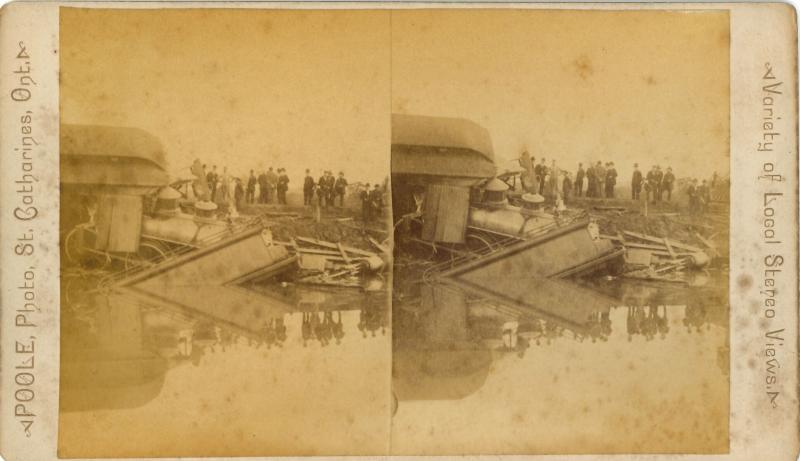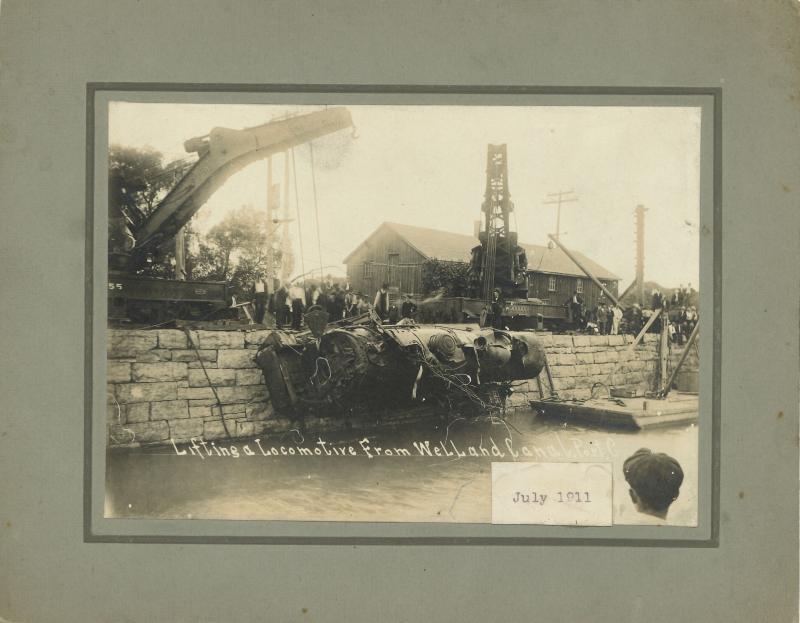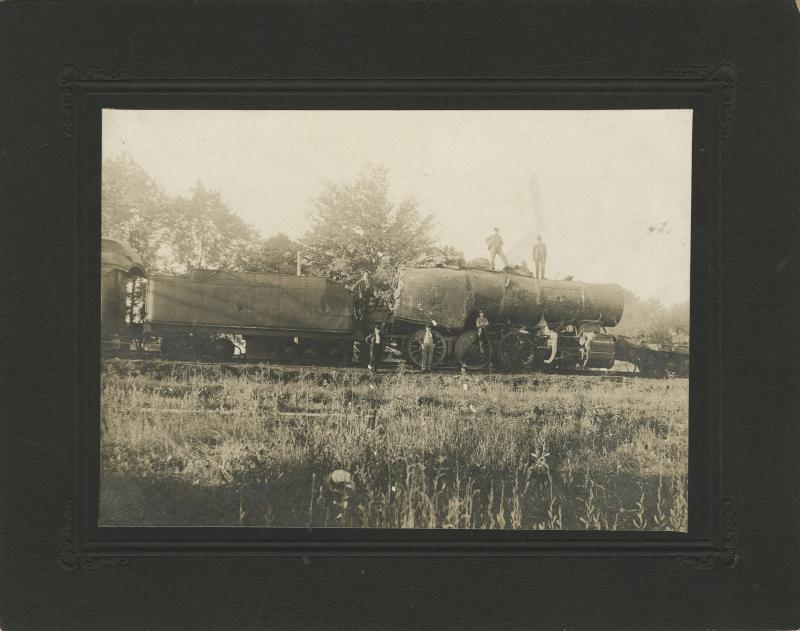Derailed Trains
There have been several accidents involving derailed trains and the Welland Canal, many as a result of swing bridges being opened as a train approached. One such incident occurred on April 25, 1876 about half a mile south of Welland. The swing bridge was open to allow the tug Mary O'Laughlin to pass just as a train approached from the west. The red signal light was up, but the train continued to approach without slowing. The bridge-tender desperately tried to attract the attention of the train but to no avail. The train could not be stopped in time and plunged into the water, dragging eight cars loaded with merchandise with it. The driver, Aaron Cady, and the brakeman, John Vanhoughten, were killed.
Another train derailment occurred near Merritton on August 11, 1885. This time the train crossed the bridge without incident, but one of the engines left the track at the junction of the bridge and the main line. The pilot engine and two baggage cars were dragged into the water. Two men were killed, Engineer Cox and Express-Messenger Jennings. A tug had just passed through the bridge and it was closed, but the bridge-tenders did not have time to lock it before the train reached them. Since the bridge was not locked, it remained open about 18 inches, causing the train to derail. An inquiry found that the air brakes were not working and that Cox should have whistled immediately after realizing this. It was also found that spring locks should be placed on all swing bridges.
On July 20, 1911, a train travelling in Port Colborne derailed and fell into the Welland Canal. The engineer, Charles Smith, did not notice that the swing bridge over the canal had been opened to allow a ship to pass. The engine and tender both plunged into the canal, with Smith still in the engine car. He was killed in the accident. A fireman was able to jump to safety. Navigation in the canal was blocked for several days. The auxiliary crane Hamilton was used to remove the trucks of the engine and the tender the following day. By July 23 the wreck was cleared and traffic re-opened in the canal.


